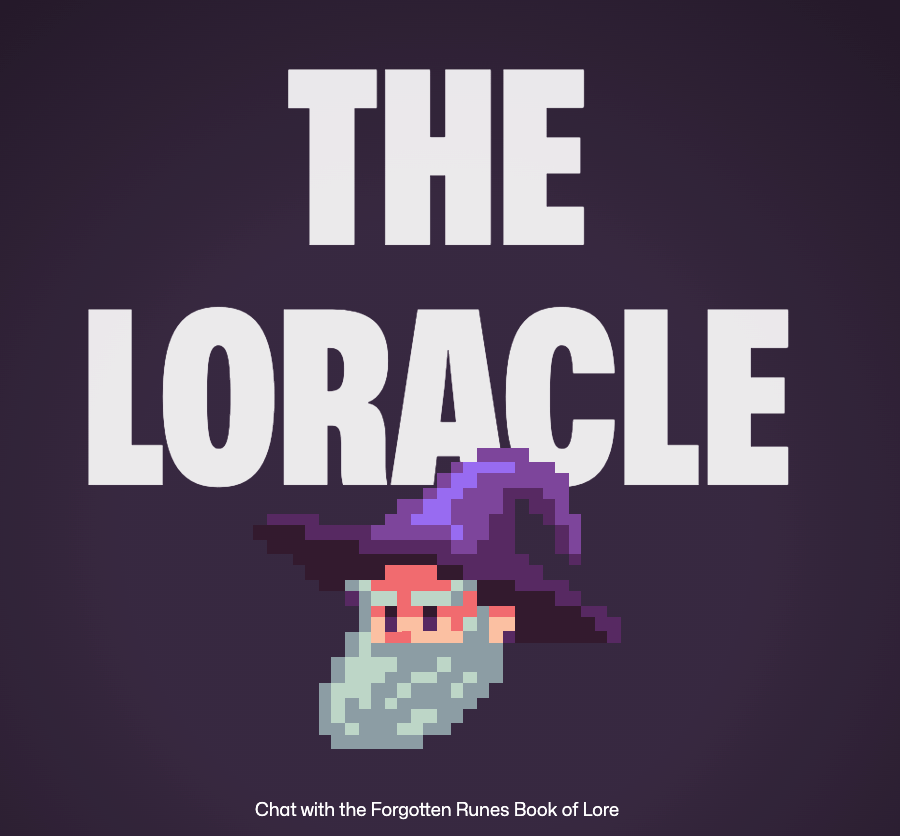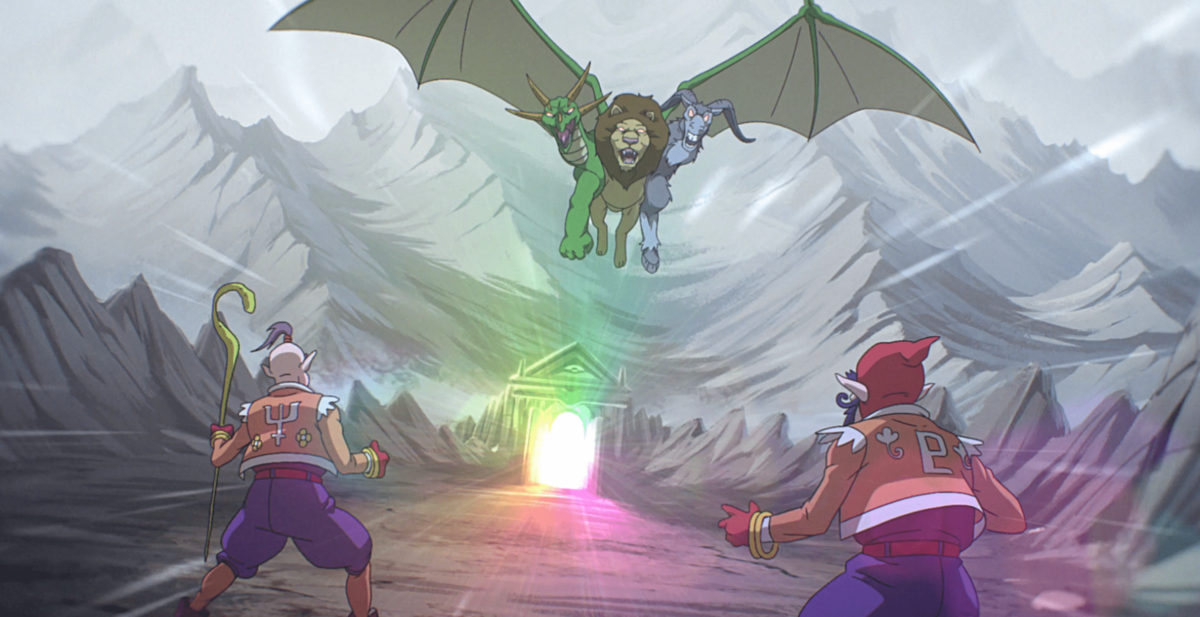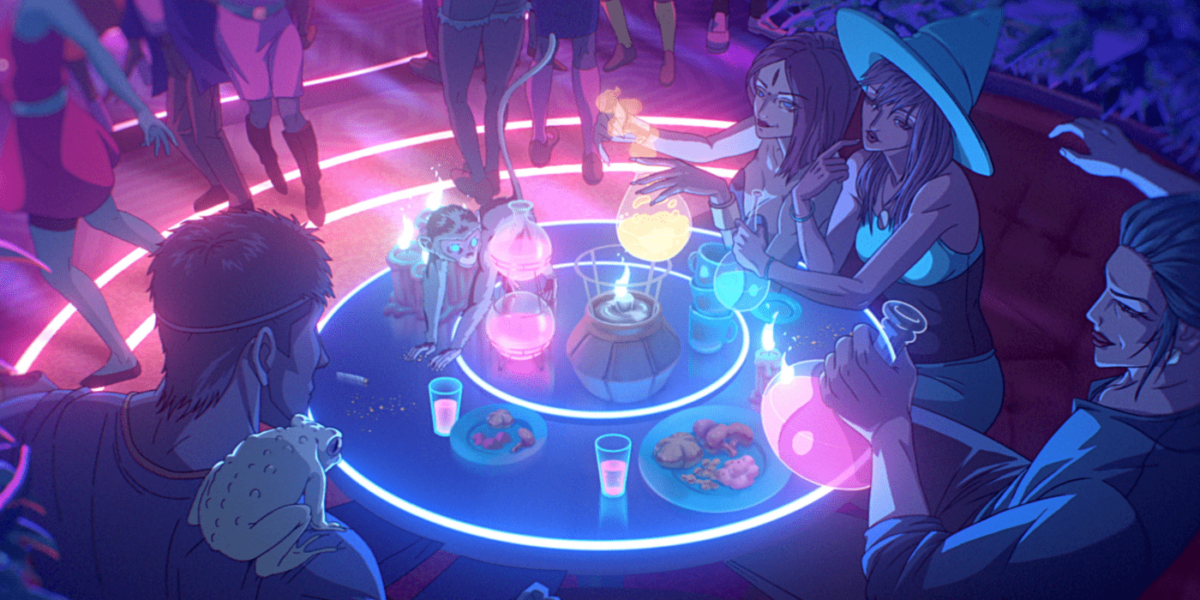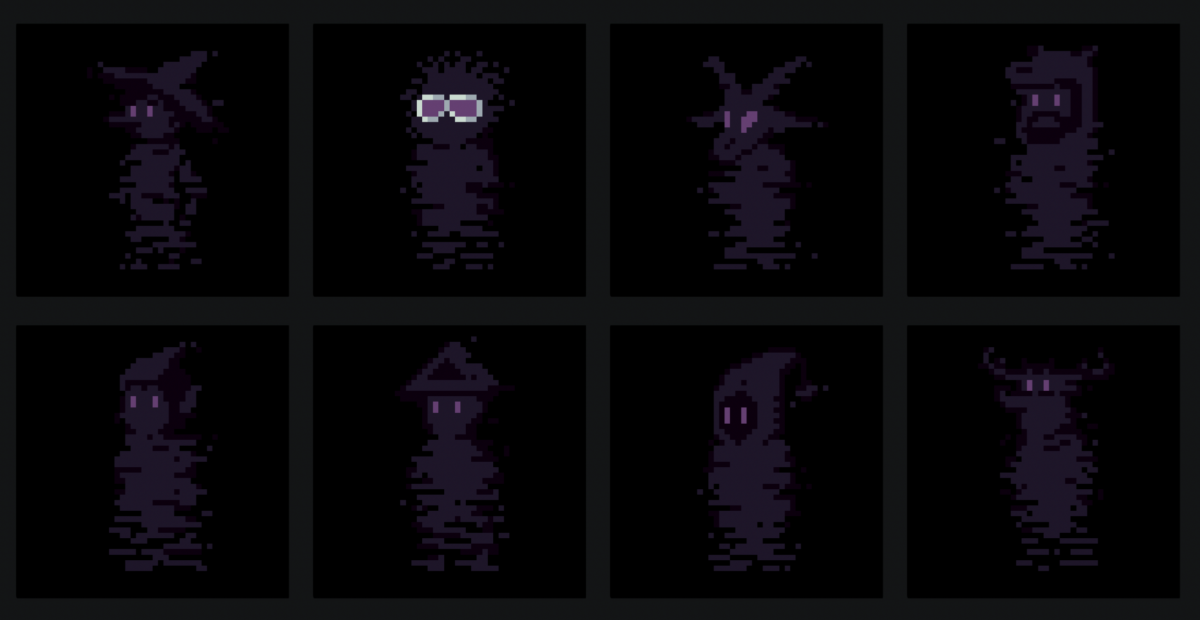What is the point of an NFT project? How do they sustain themselves, and what truly differentiates one from another? These kinds of Web3-related questions are unique in that they come from both crypto art veterans and those who still find the very concept of NFTs to be a bit absurd. They also sit at the crux of what is arguably the NFT ecosystem’s greatest challenge: justifying its own continued existence.
Not many projects have come up with a good, lasting answer to these questions, and it’s not always for lack of trying. Despite sincere efforts and the exceedingly common rhetoric that projects often put out into the Twitterverse about building a sustainable Web3 enterprise on the back of blockchain-backed JPEGs, few can point to a convincing value proposition that exists outside the walls of the niche-casino hype machine that drives much of the industries movements.
Some are faring better than others. Yuga Labs is betting hard on the gaming industry to carry at least some of the IP under its banner into the future, and Pudgy Penguins has found initial success in branching out to the kid-friendly retail toy market. Forgotten Runes Wizard’s Cult is another Web3 entity looking to solidify its future through an expansive IP play; only it’s using storytelling and a focus on expansive lore-building to do so.

Helping it get there is The Loracle, a ChatGPT-powered AI bot helping Runes community members craft stories about their NFT characters and build out a fantasy franchise in record time. Launched in May, The Loracle has helped push the number of entries in The Book of Lore, the project’s canon chronicle, to nearly 4,500.
With the first entry to its comic book series already released and an upcoming TV show headed by Derek Kolstad, the mind behind the John Wick franchise, Forgotten Runes has room to roam. Now it’s looking to AI to help base those productions in as broad and deep of a literary context as classic franchises like The Lord of the Rings, Harry Potter, and more.
The strategy is bold, and the embrace of AI is refreshing; few other projects in the space are utilizing artificial intelligence in such a direct and compelling way. Navigated properly, it could end up paying dividends for the company. We spoke with Forgotten Runes’ CEO, Dotta, and the company’s co-founder and COO, Bearsnake, to take a look at what sets the project apart.
nft now: Let’s break down the basics of Forgotten Runes and what it’s trying to accomplish as a Web3 brand. In what vein does the project operate, and what sets it apart from others in the space?
Dotta: The idea behind Forgotten Runes is that we are creating a universe, a world, and stories in the tradition of The Lord of the Rings and Harry Potter; these epic universes. The difference here is that we think the value should accrue to the creators.
There are tons of people who create Harry Potter or Star Wars fan art, but all of that value ends up accruing to J.K. Rowling or George Lucas. The idea here is that you can create and develop your character, but then you will actually own the commercial rights to it. So we’re neither a centralized project nor are we sort of a Creative Commons project where anyone can build on it for free and do whatever they want.

There are challenges there. We haven’t fully published our comic book series yet, for example. We have one comic book that’s out already. We got to deal with Titan Publishing and we’re publishing 10 more comics in the fall. We’re also working on a television show. We have Derek Kolstad, the creator of John Wick, as the writer for our show, and we put out a trailer for it.
That said, huge IP expressions like a comic book and a television show take a lot of time. So, being able to have this central narrative that you can hang your hat on is crucial. How do you know what the locations in these stories are? What are the items? What are the themes of the universe? Who are the central characters, the narratives, and the places that you can interact with? You need to have the story of Frodo and the ring to set the context.
We don’t have that yet. When people come to tell stories about the universe, they want to know what has been written already. That’s where The Loracle comes in. From the first months of our project, we created what we call The Book of Lore. It’s a token-gated website where, if you own a Forgotten Runes character, you can come and write a story about your character. We have over 4,000 stories in the book right now. We also have the Wizzypedia, a kind of Wikipedia of facts about the Forgotten Runes universe. All of this is information that The Loracle, our ChatGPT bot, can draw from to help our members create new stories.
nft now: Projects that attempt to capitalize on their IP to reward holders need to navigate tricky legal territory. Royalties distribution, for example, is out of the picture because that would incur the wrath of the SEC. To get around this, some Web3 organizations, like Pudgy Penguins and Truth Labs, craft unique, individual agreements with holders. How does Forgotten Runes walk this line?
Dotta: One of the things about Forgotten Ruins is that we’re designed to reward our creators. It’s perfectly legal to license the IP from someone who created a work. So, if I create a character, it’s perfectly acceptable for Magic Machine, the company behind Forgotten Runes, to license that character and then pay you a royalty on the works that we create from that. You do make deals with individual holders.

There are tools we are creating to make that a bit more streamlined. You want to make it easy for people to participate in the IP licensing business. What you have with Forgotten Runes is people developing these characters in really deep ways. Some of our characters have dozens or even hundreds of customized artworks, and they have developed their stories. One of the key problems with the Howey Test is this expectation of profit based on the efforts of others. So, one of the things that is core to our project is that your profit is coming from the efforts of yourself. It’s coming from the storytelling of your character; it’s not about a rarity metric.
Bearsnake: This is a key area where The Book of Lore comes in. When I look at other projects, I see they license 10 characters, let’s say. That’s great, but we’re trying to figure out the scale. If you do 10 licensing deals in a 10K collection, you still have 9,990 people left out of that.
I think the Book of Lore is a vehicle not only to actually create more of an emotional connection but also to reduce the friction for people to create. As soon as they put these entries into the book, it’s a lot easier to do that.
To have almost 4,500 original stories already written, I think we’re already getting to a much larger scale to be able to return value through all these different IP expressions.
“You have these master storytellers taking direction from the community itself.”
bearsnake
Derek Kolstad, the showrunner for the upcoming TV show, and Joe Rechtman, the comic book writer, their first order of business to start writing scripts was to read the Book of Lore. So, you have these master storytellers taking direction from the community itself.
The Book of Lore launched in the late summer of 2021. But there was still the issue of how to parse through it. When LLMs [Large Language Models] came out, all of a sudden, there was this perfect use case seemingly built for us. Now, we can synthesize all of that data and input and story into this kind of collective consciousness that is The Loracle.
nft now: Have you seen an uptick in the rate of story contributions to The Book of Lore since introducing The Loracle?
Dotta: Absolutely. The way we think about The Loracle is not so much that it’s trying to be your auto lore writer, but rather a creative assistant.
Bearsnake: And we make that point not to appease the anti-AI crowd but just to underscore that we want the lore to be quality lore. A lot of projects view lore as just another part of their ponzinomics. What we care about is actually trying to build an IP that lasts for 100 years that people love. We’re trying to write stories and create artwork that becomes a household name.

The reason behind telling people not to view this tool as an automatic lore creator is not so much because we’re trying to appease anyone in the anti-AI crowd, it’s that we tried to make it automatically create lore, and it was kind of soulless. That said, I do think that there are a lot of opportunities to utilize it as a screenwriter, a producer, or an art director. We have some ideas there.
nft now: Let’s talk a bit about the bot itself. What about its function and the way its output might evolve over time as more people create stories in The Book of Lore excites you the most?
Dotta: One of the important things about ChatGPT is that a lot of people give it a prompt, it answers, and then that just repeats. After a little bit of time, it starts to forget. There’s a new form of programming emerging called LLM agents. BabyAGI really kicked this off. Basically, it puts ChatGPT in a loop to say, ‘Here’s your goal. Now develop your next tasks. Now work towards those tasks.’
That method of programming changes everything. I think that we’re just at the cusp of people exploring how it actually functions. But that really only works if you have cohesiveness in the underlying data set. There are a couple of things we’re going to work on. One is that we need to understand the characters very deeply. So, we’re going to be working on mechanisms where we can do something like a personality test to quiz you about who your wizard is. We’re going to be using GPT to kind of develop these scientifically-based personality tests of each wizard and let our holders do that.
“We’re speed-running a franchise; we’re creating this world as fast as possible with a huge community.”
Dotta
The other aspect that we really need to develop is the world itself, the maps. I’ve been working on some tools where you’ll be able to develop suggestions for the map at basically an infinite resolution. We’re prototyping some tools that can basically take the map that we have of the universe, along with the lore, and suggest sights, smells, interesting locations, points of interest, and the inhabitants.
We’re not doing this to hand over our creation to The Loracle, but we’re speed-running a franchise; we’re creating this world as fast as possible with a huge community. What you find is that, maybe 10 percent of the time, what The Loracle suggests is actually quite good, and it feels like something that should become canon.
nft now: If I’m a holder who creates a story with The Loracle’s help that ends up being used in one of the project’s IP expansions, how do I know I won’t get steamrolled when it comes to fair compensation?
Dotta: Financial incentive systems have to work, or else people won’t participate, and this project only works when people are incentivized to continue contributing. If, for example, we get a show on Netflix, and what happens is interpreted as a sort of stiff arm to the community, then the project will fail, and people will not participate.
The point of what we’re doing here is not an expectation of profit on the efforts of others. It’s an expectation of profit based on your own efforts. If Magic Machine creates a Harry Potter, and you own the IP rights to a Hermione Granger, then you can monetize that on your own, apart from us. There are a lot of opportunities created simply by the fact that we created Harry Potter.
Yes, we will do our part to make sure that when we use people’s stories in the television show, they’re fairly compensated. At the same time, if your character is being shown globally on Netflix in a global television show, that is very, very valuable.
nft now: How are things going with the animated TV show? What kind of timeline are you looking at with that project?
Bearsnake: When it came time to think about the Forgotten Runes TV show, it was clear that like were a handful of people that have, out of thin air, created a brand new world and IP that’s been successful. John Wick is one of them, and Derek just created it out of thin air. Obviously, a lot of people were instrumental in making that a success. Keanu [Reeves] is amazing, and the directors are incredible. But Derek is a true world-builder. He takes very basic character archetypes and makes them interesting.
“For us, it’s not a sprint. It has to be done right.”
Bearsnake
Last year we launched the trailer, and Derek has written the pilot. It definitely took some time to get him; he’s a busy dude. So, for us, it’s not a sprint. It has to be done right. And you can only pitch it once. In the film and TV world, most projects are kicking around for at least three years before they ever even get bought.
We have Titmouse as a studio ready to produce it, and they produced the trailer. Now, we’re in the distribution conversation phase – what streaming service or what network, although I would say it’s highly unlikely we’re gonna take this to a linear network. We have a lot of interest from Netflix, Amazon, and Max. They know about it, but we haven’t pitched it because we need to make sure Derek is in the clear and that it’s the right time. So, we’re locked and loaded.
We even had an offer to finance the entire show last year, but we turned the deal down because the ownership structure would have created a ton of friction between this idea of sharing with our community. I wear that as a badge of honor. I think a lot of people would have taken that.
nft now: How do Web3 projects find a tangible and sustainable way to break out of being a niche industry and phenomenon?
Dotta: With Web3 companies, the survivors will be singular. I think a lot of projects from the 2021 cohort started out looking similarly. You think of 10K PFP collectibles, and that’s kind of the business model. People trade them, and we make money on the royalties. The fact that royalties evaporated overnight has been a huge driver for projects like ourselves, Pudgy Penguins, Apes, everybody.
“I think it’s going to be a really great case study of how an ETH-based project moves into Ordinals in an eloquent way.”
Bearsnake
On the other hand, different projects are very different in terms of what they’re trying to achieve. So, you know, we are building a game, a television show, a comic book from community IP. Other projects are going to have a completely different approach in terms of where they look to make money. Pudgy Penguins is trying to become a kind of Amazon drop-shipper merch business.
Bearsnake: Having been through two major tech cycles in startup land, I think the biggest signal of how early we are is that every project is still judged by the same criteria. We’re judged against RTFKT, which is judged against Yuga, which is judged against Penguins, which is judged against Renga.
Gaming is starting to break off and be its own vertical, but the biggest signal to a nascent ecosystem is that there’s no niche market. There’s no niche vertical right now. You’re either a one-of-one artist in fine art or you’re a PFP project. It’s so bananas to have it sit in those two buckets. I think the world needs new IP. The beauty of Web3 is you can raise money to start the business. But more importantly, especially for projects that have people behind them who have built businesses before, you are able to capture the beginning of an audience.
That is the spark. If you take care of those people, if you maintain your values and vision, and take your community along with you, I think there’s going to be a ton of new worlds and opportunities there.
nft now: What else can you tell us about the future of Forgotten Runes?
Dotta: The Shadow Hats are something that we’re working on. In developing the lore of this world, we had the idea of the lore of wizards in a sort of an alternate dimension, and those are The Shadow Hats, which are 10 Ordinals that we inscribed to the Bitcoin blockchain back in February. We’re going to do a drop. There are only 10 available in the first 1,000 Inscriptions. There will be an associated drop of a supply between 300 to 500 “shadow beings,” and more will be revealed soon.

Bearsnake: I think it’s going to be a really great case study of how an ETH-based project moves into Ordinals in an eloquent way. We’re not just recreating our entire collection and putting it on Bitcoin. It’s new art. The opportunity in Ordinals is to come in with depth. A lot of people have been leaning on inscription numbers or the rare sats. We’re going to start out being able to tell lore about the Shadows. There’s so much intention behind it. I’m just getting goosebumps just thinking about it.

